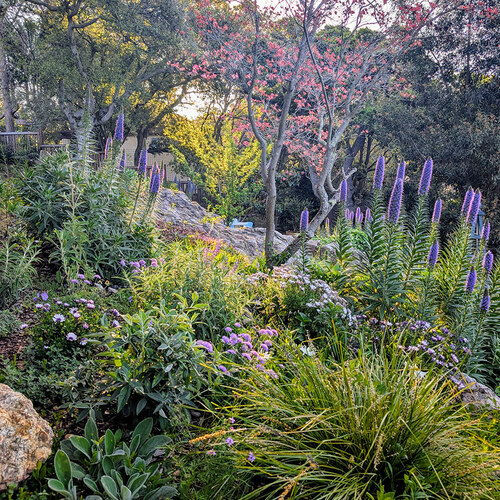Hi GPODers!
This season we’ve enjoyed the beauty of a range of fabulous spring plants: flowering trees and shrubs in a vast array of sizes and shapes, bold bulbs that welcome spring with their bright color, and perennials that kick off the season with diverse (if often ephemeral) blooms. Today, we’re heading to Northern California to visit Adriana Porter Felt and see the spring plant that she enjoys most and that we haven’t been treated to yet this season.
Hi GPOD,
I’m writing you from Berkeley, California.
I planted pride of Madeira (Echium candicans, Zones 9–11) for their spring blooms. They burst forth into tall blue spires in mid-March and last until May, providing an early but long-lasting statement in the garden. I situated it both in my hillside garden and in containers along my sidewalk strip.
I’ve seen pride of Madeira described online as short-lived, but in my neighborhood it grows for decades. Some of my neighbors have pride of Madeira with trunks as thick as my leg. I think the secret is that our climate and terrain are very similar to its native habitat on the island of Madeira. Like Madeira, we have dry summers, and I provide only limited summer irrigation. I also live on a rocky clay hillside, which is ill-suited to English cottage flowers but perfect for Mediterranean plants from rugged mountains.
Countless bees flock to it for the spring nectar. I spy European honeybees, native carpenter bees, and bumblebees in the mix. I love to sit in an Adirondack chair and surround myself with their humming.
Each plant has a slightly different color, ranging from light blue to dark purple. A few special plants have multicolor blossoms.
Best,
Adriana (@adriana_igs_holes on Instagram)
Earlier in the season, flowers are just starting to bloom on this plant’s massive inflorescences. At their largest, these spires can grow up to 20 inches long.
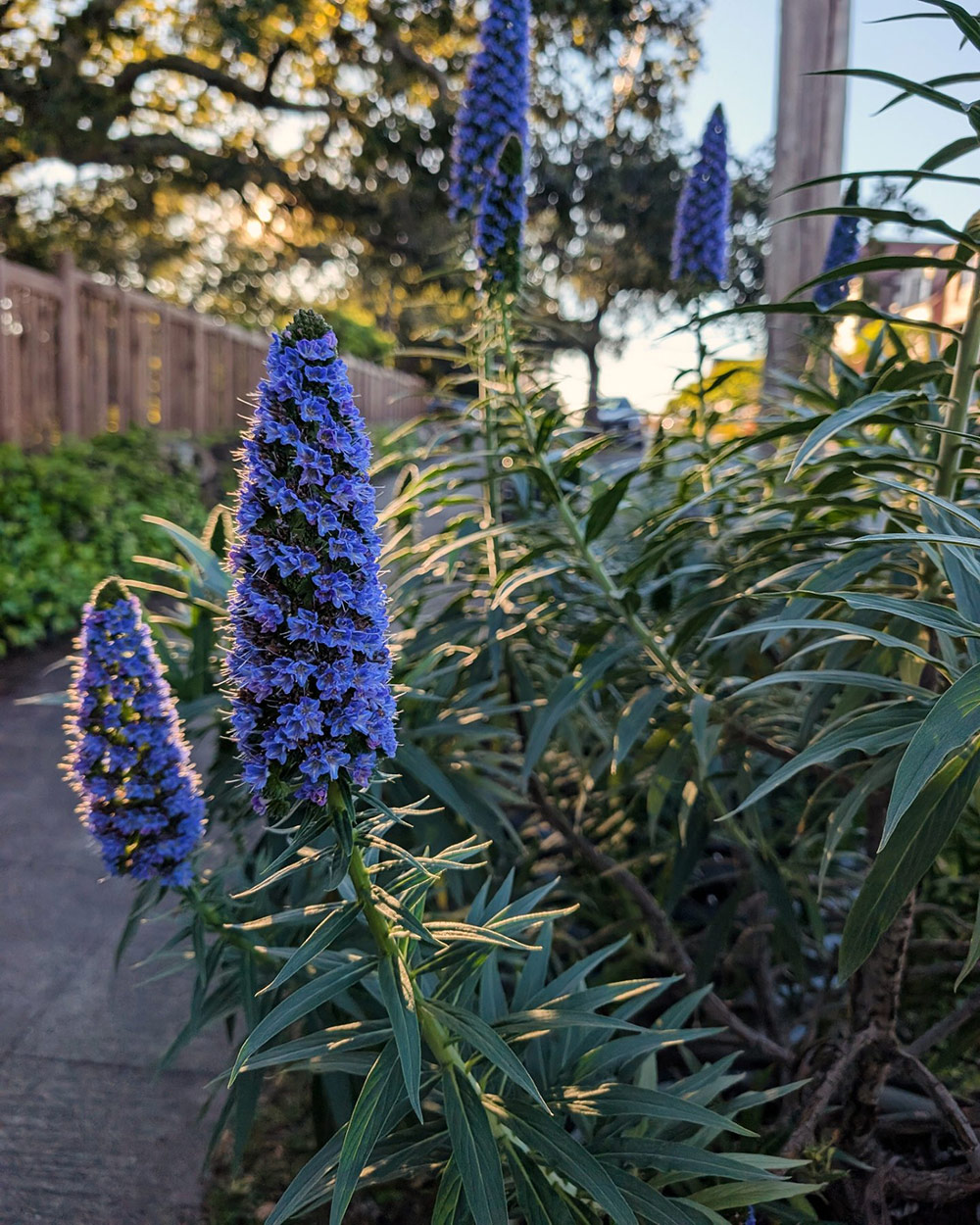 As its name indicates, pride of Madeira is native only to the Madeira islands, an archipelago in the Atlantic Ocean that belongs to Portugal and is famous for its stunning landscapes, vibrant culture, and unique plant life. Outside of it’s incredible natural scenery, including an ancient laurel forest that is a UNESCO World Heritage site, there are a multitude of incredible gardens that earn Madeira many nicknames: the Garden Island, the Floating Garden, and Garden Isle.
As its name indicates, pride of Madeira is native only to the Madeira islands, an archipelago in the Atlantic Ocean that belongs to Portugal and is famous for its stunning landscapes, vibrant culture, and unique plant life. Outside of it’s incredible natural scenery, including an ancient laurel forest that is a UNESCO World Heritage site, there are a multitude of incredible gardens that earn Madeira many nicknames: the Garden Island, the Floating Garden, and Garden Isle.
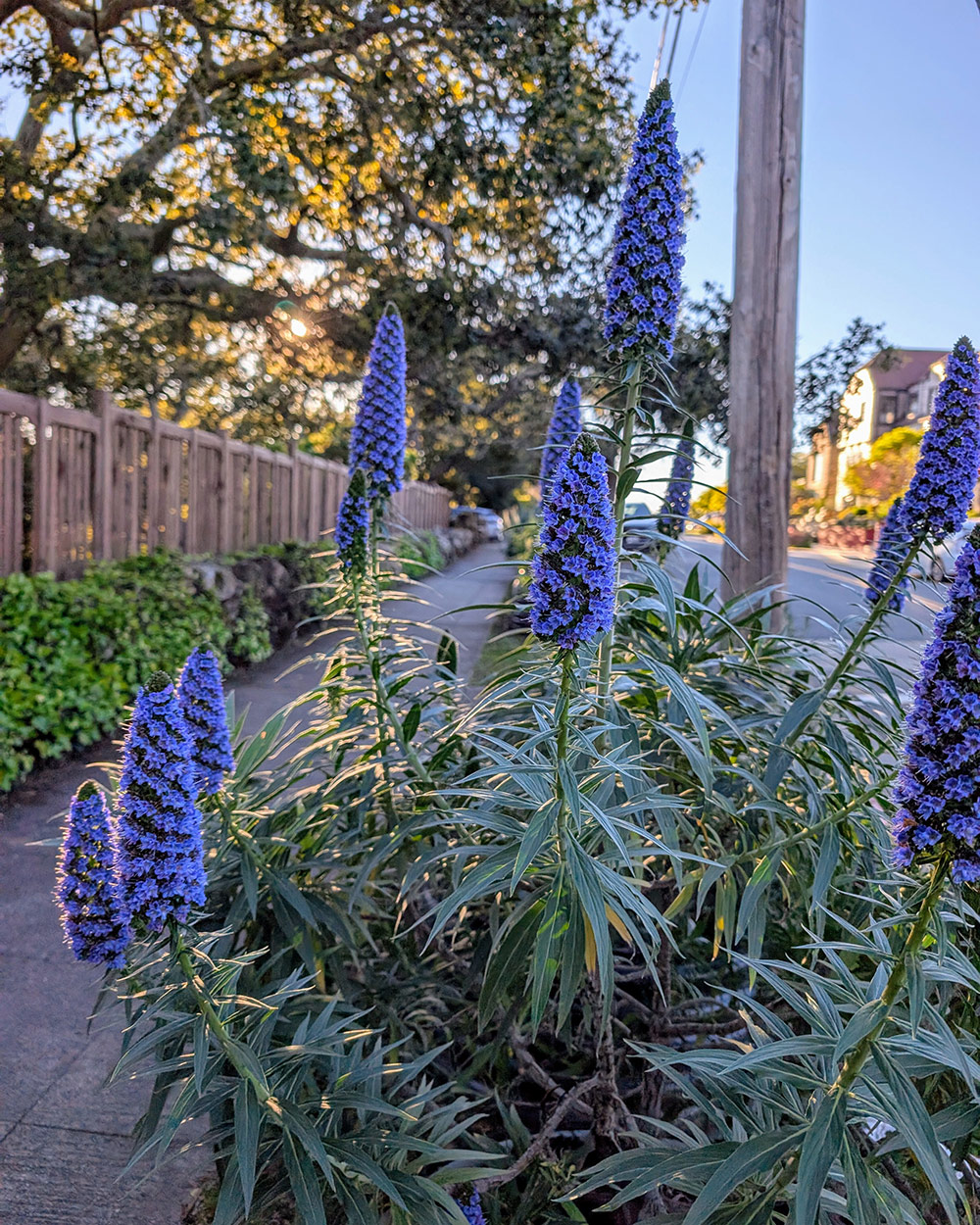 Found on the rocky slopes of Madeira, this plant is drought tolerant, salt tolerant, and deer resistant. As Adriana mentioned above, these characteristics are a great match to the climate of Northern California, but this can also be a detriment. When not kept under control, it can escape cultivated regions and encroach on native plant species. Keeping these plants away from open natural spaces and removing flowers before seeds mature is best practice for growing pride of Madeira in California.
Found on the rocky slopes of Madeira, this plant is drought tolerant, salt tolerant, and deer resistant. As Adriana mentioned above, these characteristics are a great match to the climate of Northern California, but this can also be a detriment. When not kept under control, it can escape cultivated regions and encroach on native plant species. Keeping these plants away from open natural spaces and removing flowers before seeds mature is best practice for growing pride of Madeira in California.
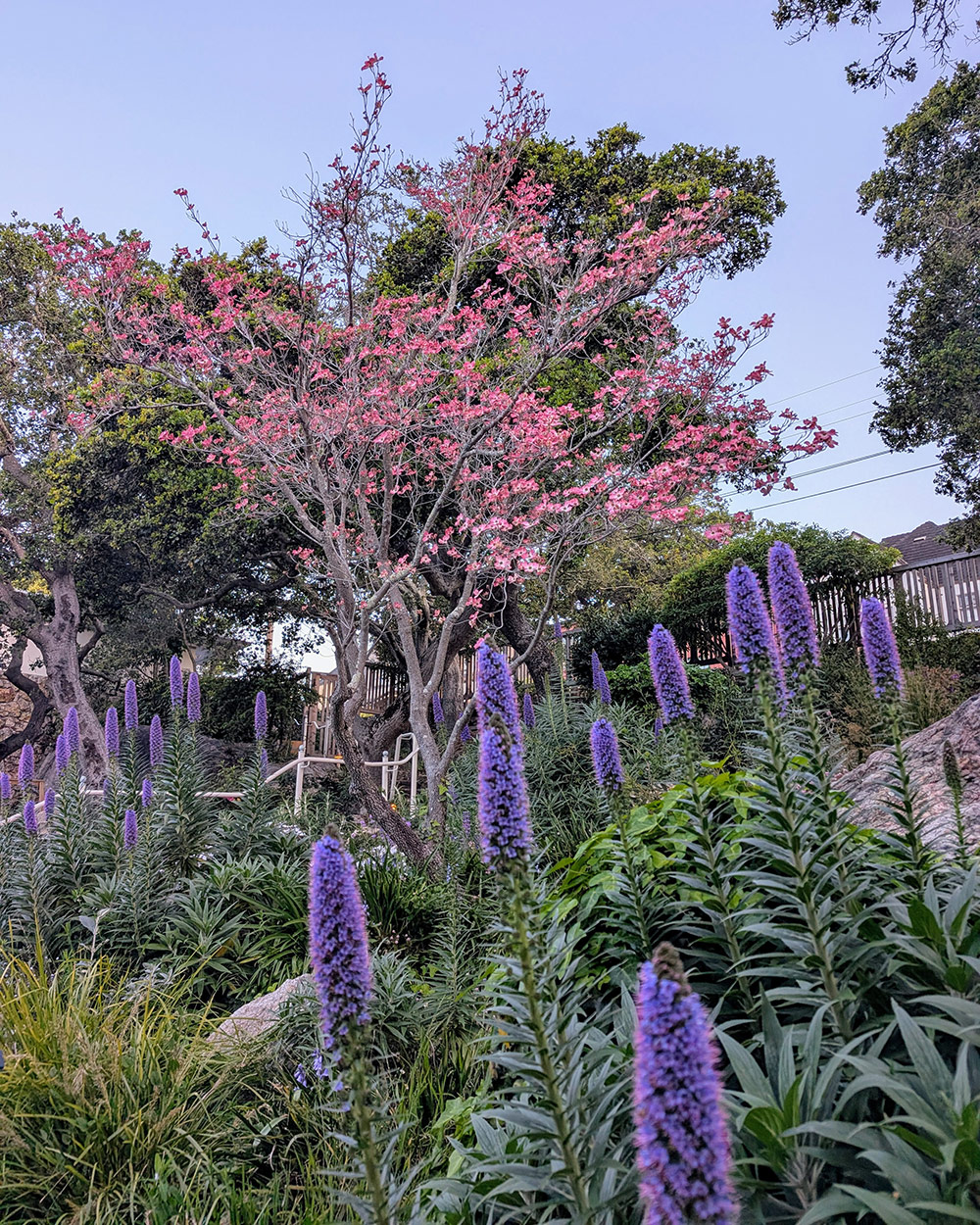 Adriana is keeping her plantings in check; her rocky black slope is perfectly dotted with these bright spires of blooms. They look particularly lovely paired with the early blossoms of her pink flowering dogwood (Cornus florida f. rubra, Zones 5–9).
Adriana is keeping her plantings in check; her rocky black slope is perfectly dotted with these bright spires of blooms. They look particularly lovely paired with the early blossoms of her pink flowering dogwood (Cornus florida f. rubra, Zones 5–9).
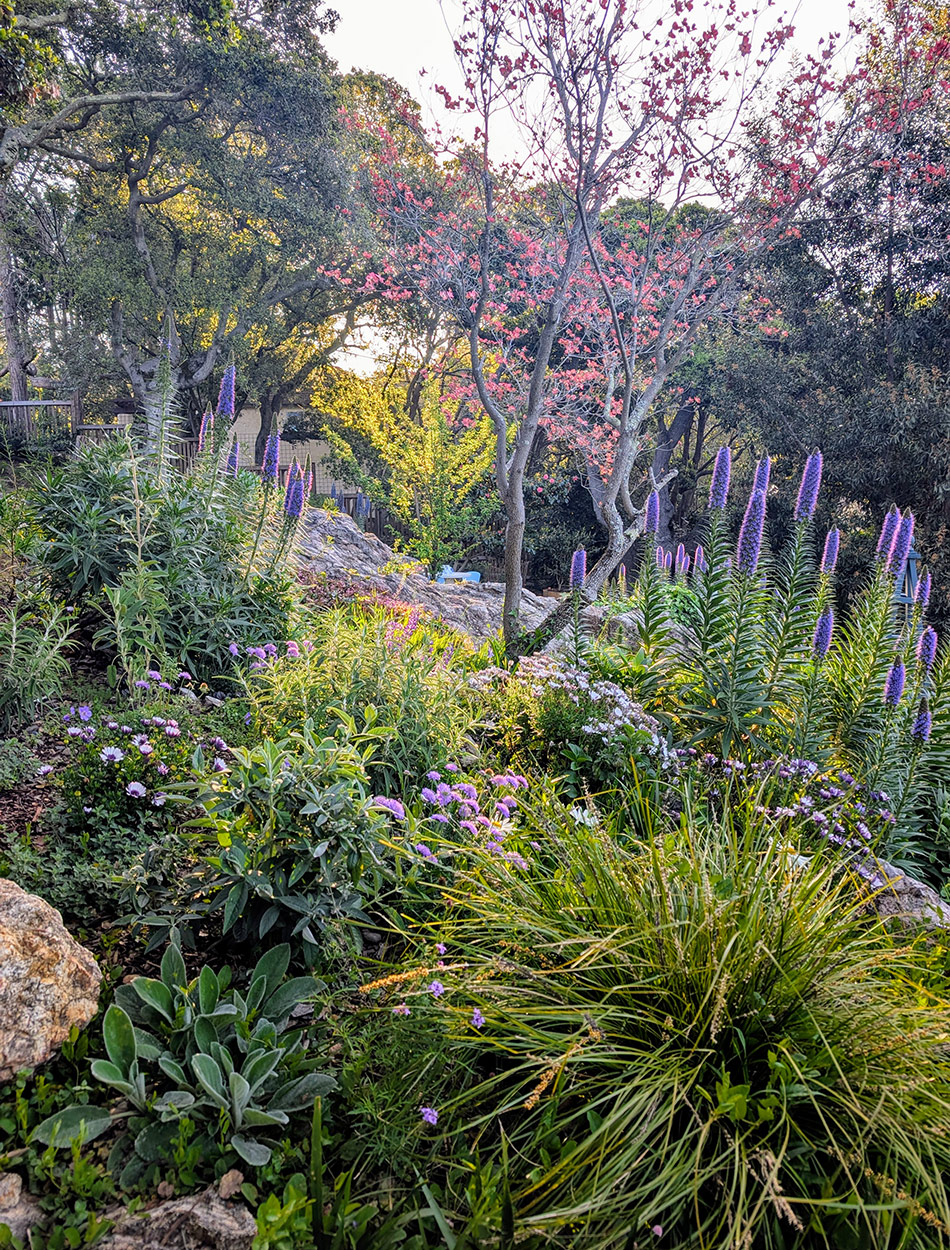 Here’s another angle of the pride of Madeira scattered across Adriana’s hillside garden, mingling well with her other plants and complementing all the other purple and pink flowers in her spring landscape. She has done an incredible job creating a garden with that lush English cottage feel, but with plants that are better adapted for her rocky clay conditions.
Here’s another angle of the pride of Madeira scattered across Adriana’s hillside garden, mingling well with her other plants and complementing all the other purple and pink flowers in her spring landscape. She has done an incredible job creating a garden with that lush English cottage feel, but with plants that are better adapted for her rocky clay conditions.
Lastly, Adriana included a video of these spectacular blooms glowing in the sun, the beautiful sounds of birds chirping in the background.
It’s always hard to pick a “favorite” plant, but are there any specimens in your garden that you’re particularly proud of? A plant you saved from the brink of death, a species you carefully overwinter indoors every year to grow in your zone, or a plant with so much sentimental meaning that you’ve dug it up to bring to a new garden or passed it down to another gardener in your family? Let us know in the comments below, or share photos of your prize plant with the blog! Follow the directions below to submit photos via email, or send me a DM on Instagram: @agirlherdogandtheroad.
We want to see YOUR garden!
Have photos to share? We’d love to see your garden, a particular collection of plants you love, or a wonderful garden you had the chance to visit!
To submit, send 5–10 photos to [email protected] along with some information about the plants in the pictures and where you took the photos. We’d love to hear where you are located, how long you’ve been gardening, successes you are proud of, failures you learned from, hopes for the future, favorite plants, or funny stories from your garden.
Have a mobile phone? Tag your photos on Facebook, Instagram or Twitter with #FineGardening!
Do you receive the GPOD by email yet? Sign up here.
Fine Gardening Recommended Products
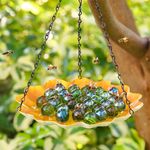
Bee Watering Station with Vivid Flower Design
Fine Gardening receives a commission for items purchased through links on this site, including Amazon Associates and other affiliate advertising programs.
Thoughtful Combo: You will receive a bee feeder and 30 glass marbles. This thoughtful combo can provide clean water for the bees, you just need to put the marbles into the bee watering station, add water (note: the water level should not exceed the height of the marbles) and hang them in the right place. The round, colored marbles can provide a place for the bees to stand and prevent them from falling into the water, effectively keeping the bees safe. Fine Material: This exquisite bee bath is made of high quality iron material, smooth surface, rust and weather resistant, not easy to fade, sturdy and reliable. Bee cups for garden can well meet the drinking water needs of lovely bees, and it can also provide food for bees, such as sugar water, nectar, etc., attracting more bees to your outdoor area and making your garden full of vitality. Perfect Size: The butterfly watering station has an overall height of 13.4 inches, a bowl diameter of 9.4 inches, and a weight of 0.44 pounds. The bee cup serves the needs of the bees well without plunging them into dangerously deep water or taking up unnecessary space in your garden, and this compact and efficient design makes it a practical addition to any outdoor space. Elegant Design: Our bee watering cups are designed in unique flower shapes with vibrant and realistic colours to attract lovely bees to your garden and patio, bee feeders for outside are not only functional but can also be used as a landscaping element, their vibrant floral patterns enhance the beauty of your garden. Multicolored Decoration: Colorful bee water stations look like flowers in a garden, flower bed or pot and attract bees and butterflies. They can drink or bathe in bee feeders, which are highly decorative and practical.
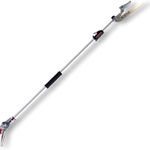
ARS Telescoping Long Reach Pruner
Fine Gardening receives a commission for items purchased through links on this site, including Amazon Associates and other affiliate advertising programs.
Telescopes from 4 to 7′. Cut and Hold (160) Blades. Drop forged blades for unsurpassed long lasting sharpness. Lightweight, 2.3 lbs., for continued use. Perfectly balanced for easy pruning.
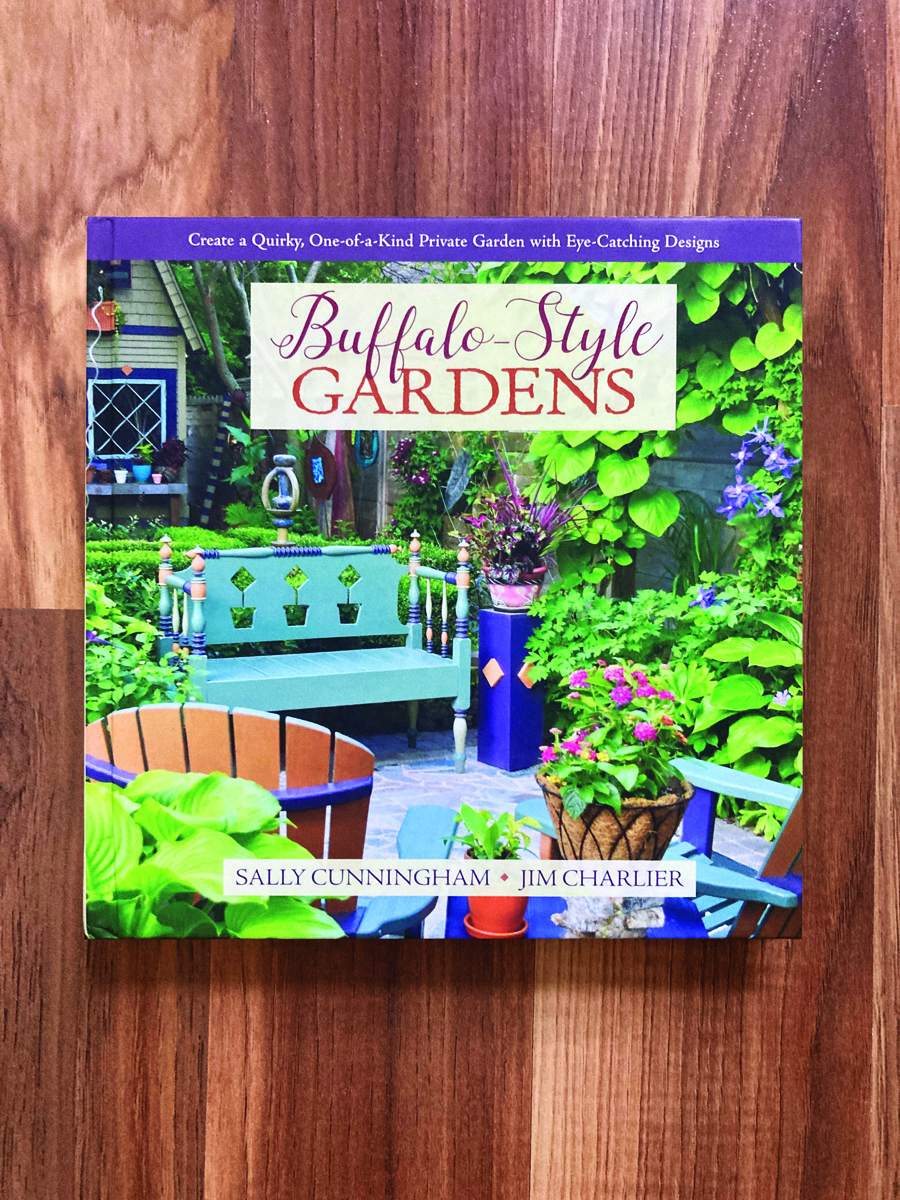
Buffalo-Style Gardens: Create a Quirky, One-of-a-Kind Private Garden with Eye-Catching Designs
Fine Gardening receives a commission for items purchased through links on this site, including Amazon Associates and other affiliate advertising programs.
Buffalo-Style Gardens is a one-of-a-kind, offbeat garden design book that showcases the wildly inventive gardens and gardeners of Buffalo – and offers readers “the best of the best” ideas to use in their own small-space gardens.

